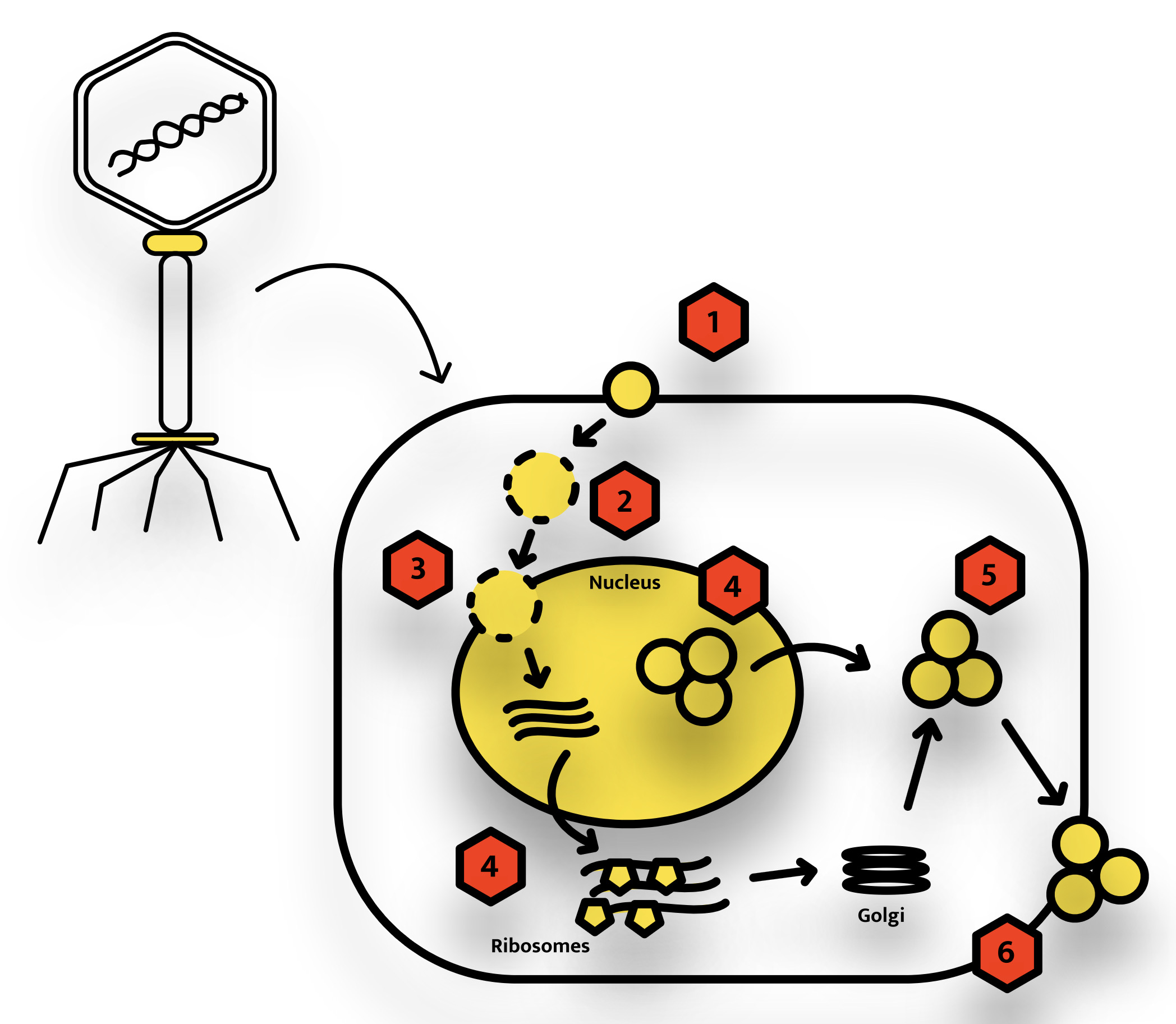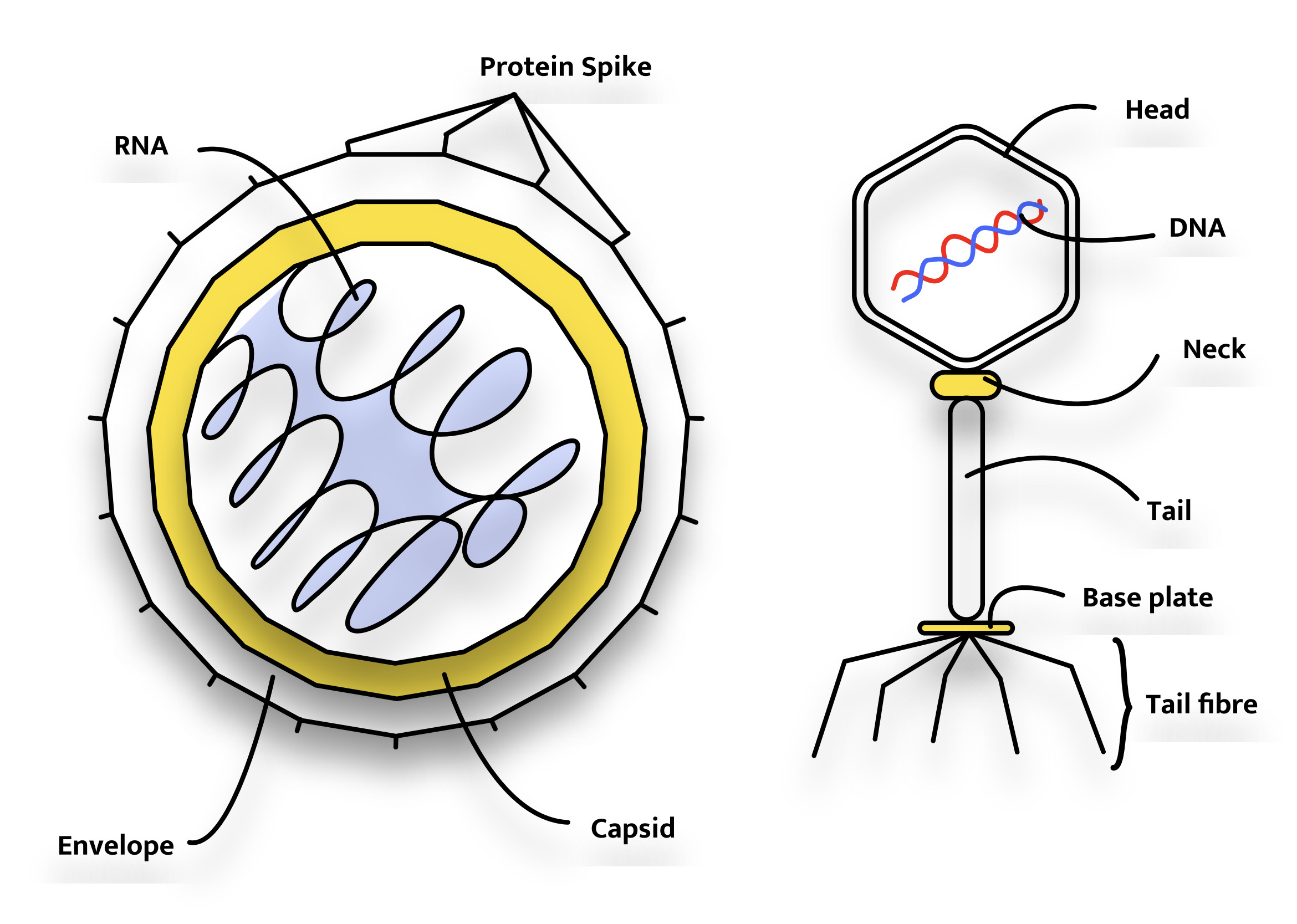Virology
Virology is the field of science dedicated to understanding viruses. This includes the study of their taxonomy, cultivation and genetics, as well as their role in causing disease. Viruses are frequently investigated for their clinical utility as vaccines and have seen proven clinical efficacy for gene therapy.
As its name suggests, virology is the scientific study of viruses focusing on a range of variables and characteristics including detection, evolution, structure, and classification of a variety of viruses. As a subsection of microbiology, it is also critical to investigate viral interactions between host cells and immunity as well as the wider impact that has on organs, and body physiology, and considering the quality of life. Compared to other organisms within the field of microbiology, they are exceptionally unique in their multiplication and structure which set them apart. Virology is significant in a range of broader subjects including biology, general healthcare, animal welfare, and ecology thus studies on this topic can prove very prolific for international healthcare [1].
The structure of viruses is key to how they function within the cells, firstly beginning with their very small size of between 20-200 nanometers in diameter, for context, human red blood cells are 10,000 nanometers in diameter. Within this structure, they consist of a single or double-stranded DNA or RNA that is surrounded by a protective protein shell referred to as a capsid. Capsid proteins are coded for by the virus genome and can occur in both single and double protein shells. Some viral families have an additional covering called an envelope which is often derived from altered host cell membranes and consists of a lipid bilayer that surrounds the shell of the virus [3].
Virus Replication
1 – Attachment - Viral proteins on the capsid or phospholipid envelope interact with specific receptors on the host cell’s surface. This allows the virus to determine the host tropism (how suitable the cell will be to replicate within)
2 – Penetration – The process of attachment to the specific receptor induces changes in the capsid proteins or lipid envelope resulting in the fusion of the viral and host cell.
3 – Uncoating – The viral capsid is removed and degraded by viral enzymes or host enzymes, releasing the viral genomic nucleic acid.
4 – Replication – After the viral genome has been uncoated, transcription or translation of the viral genome begins. This process is carried out in very different ways depending on whether DNA or RNA is utilized from the virus.
5 – Assembly – Viral proteins are packaged with newly replicated viral; genomes onto new virions that are ready for release from the host cell, this process can also be referred to as maturation.
6 – Virion Release – There are two methods of viral release, these are lysis and budding. Lysis results in the death of the infected host cell. Budding on the other hand results in the acquisition of the viral phospholipid envelope and does not kill the host cell [2].

Outside of a host or living cell, a virus is an inactive particle but once a host cell is detected and entered, it becomes active, taking over the cell’s metabolic machinery for the synthesis of new viral particles called virions. Virions are viral particles that consist of RNA or DNA with a protein cost and act as the infectious form of the virus, in turn going on to impact other host cells.
Influenza Virus & Bacteriophage
There are a variety of methods for detecting viruses including PCR (Polymerase chain reaction) which is, in recent times, conspicuous with SARS-CoV-2 (Coronavirus). This technique makes copies of the virus genomes using virus-specific probes, this then tests for the presence of the target virus. Sequencing is another nucleic acid-based method of detecting the presence of a virus as well as providing researchers with the full sequence of the genome. In addition to these methods, there are microscopy-based methods that can detect the presence of viruses too, for example, immunofluorescence. This method utilizes IFA (immunofluorescent assay) to identify the presence of viruses by reaction with viral antigens in infected cells [4,5].

2BScientific Limited is passionate about ensuring that customers get the precise, required product and have a friendly and knowledgeable team ready to answer any technical queries. We have a wide range of virology products on our website, for example, recombinant antigens, immunofluorescent labelling kits, and PCR-related products.


